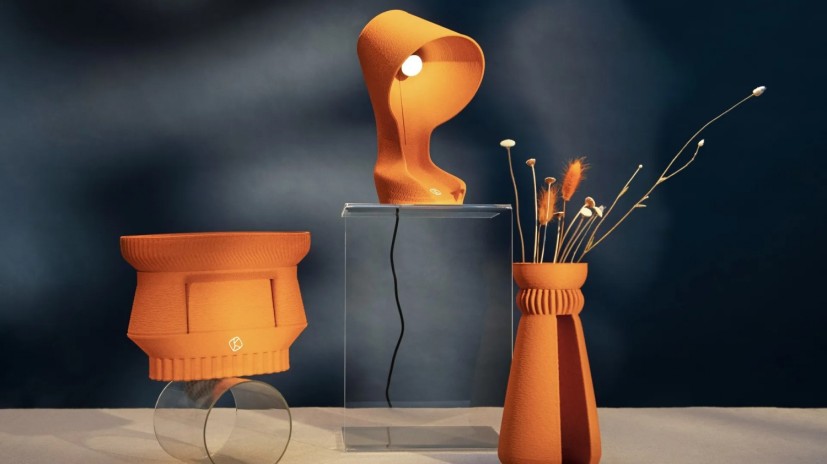
A recent report by the Circle Economy Foundation said that only 7.2% of materials used globally are being recycled back into use.
With the world's reliance on newly extracted materials increasing year by year there is also an increase in the collective volume of plastic waste generated annually, contributing to over 390 million tons.
With this impending threat in mind, a company based in Milan, Italy, called Krill Design, hopes to lead the frontier in zero waste design with its furniture line made from a patented faux plastic biomaterial dubbed "ReKrill."
According to the company's website, its plastic alternative is fully organic and biodegradable, allowing extensive reusability.
The company's founders, comprising three architects, built the business from the ground up in 2018. Krill Design primarily utilizes fruit peel, orange seeds, and coffee ground waste collected in various businesses in Italy to actualize its zero-waste designs.
Among the furnishings that it offers include stools, bookends, clocks, bowls, and a lamp called "Ohmie" made from recovered Sicilian orange peels.
Read Also : Vintage Ikea Furniture Fetches a Total of $40,000 at Auktionsverk's Stockholm Auction in Sweden
How Krill Design Offers Produces Zero Waste Products
In a statement to CNN, Marco Di Maio, director of operations at Krill Design, said that furniture made by them can be collected at the end of its typical three-to-four-year "lifespan" to be crushed and repurposed into new printed furniture.
He added that if ever any of their furniture reached the ocean by some mistake, it wouldn't be any problem because "it is biodegradable and doesn't produce any microplastics."
According to the company, each printed product is created through a multi-stepped process. The first step includes collecting dried food waste and crushing all of it into a fine powder, before using said powder to create Krill's biomaterial, also known as polyhydroxybutyrat or PHB.
After that, the collected powder is turned into 3D printing filament, which is what is then used to print out a variety of furniture designs. In particular, the "Ohmie" lamp can take an average of three hours to fully manufacture, with printing time varying across other designs.
That said, Di Maio himself acknowledges one glaring flaw of the ReKrill material, that it is expensive to produce, especially because it "costs probably six times more than common plastic."
He added that the intensive and "very difficult" process reflects the cost, but it is a "risk" that the company was willing to take and has routinely been "successful" over.
In the future, Di Maio hopes that their material will be utilized more, especially in the face of the damage that conventional plastics are doing to the world.